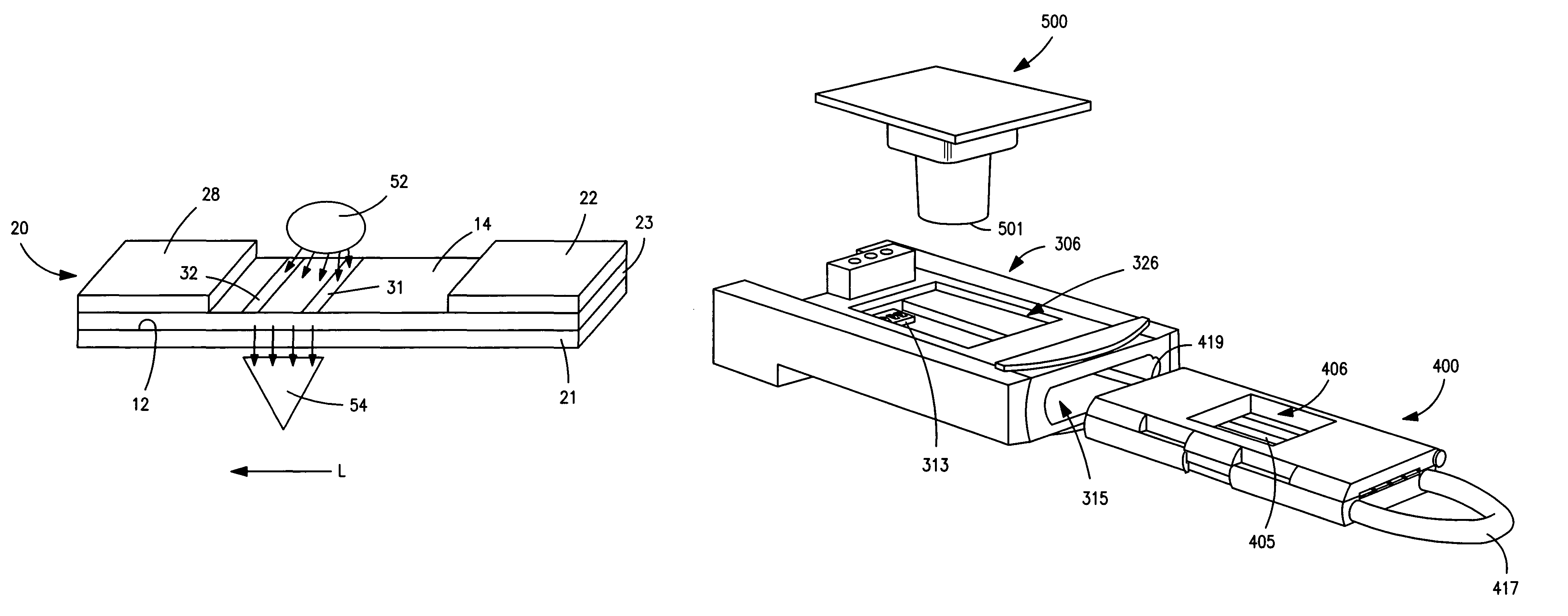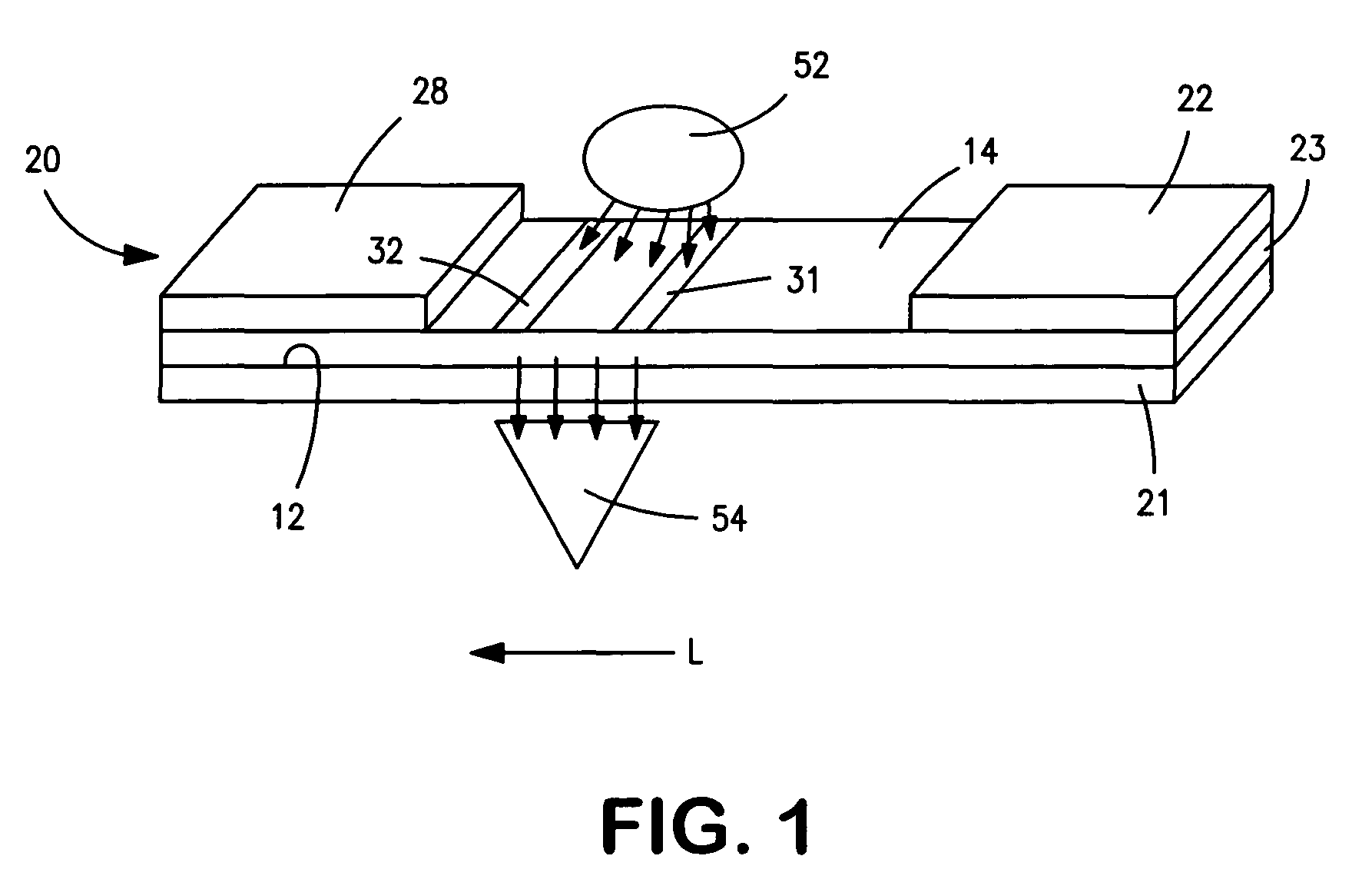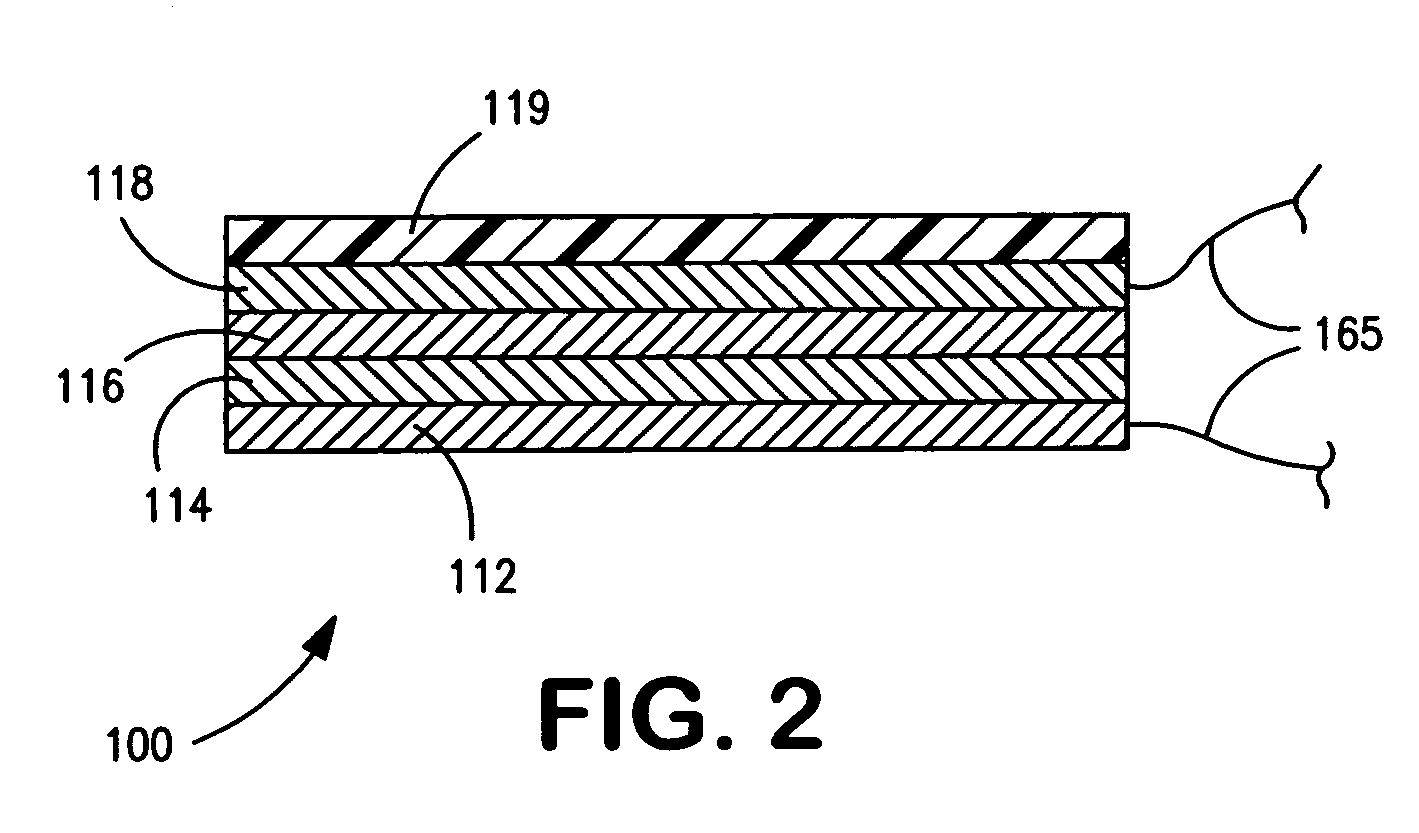Optical detection system using electromagnetic radiation to detect presence or quantity of analyte
an optical detection system and electromagnetic radiation technology, applied in the field of optical detection systems using electromagnetic radiation to detect the presence or quantity of analytes, can solve the problems of reduced cost and complexity of ordinary consumers, affecting the use affecting the sensitiveness and accuracy of optical detection systems,
- Summary
- Abstract
- Description
- Claims
- Application Information
AI Technical Summary
Benefits of technology
Problems solved by technology
Method used
Image
Examples
example 1
[0086]The ability to form an optical detection system in accordance with the present invention was demonstrated. Initially, a nitrocellulose membrane (SHF-120, Millipore Corp. of Bedford, Mass.) was provided that was laminated to a Mylar® film support. The Mylar® film was attached directly to an electroluminescent (EL) device using a transparent adhesive obtained from Adhesives Research of Glen Rock, Pa. under the name “ARclear 8154.” Care was taken to ensure the absence of bubbles, dust, and contaminants. The EL device was made by BKL, Inc. of Burr Ridge, Ill., and had a size of 60 millimeters×300 millimeters. In addition, the EL device also had a dual, broad emission maxima of 482 and 580 nanometers to give “white” light emission.
[0087]Goldline™ (a polylysine solution obtained from British Biocell International) was striped onto the membrane to form a calibration zone. Monoclonal antibody reactive toward C-reactive protein (BiosPacific, Inc., concentration of 1 milligram per milli...
example 2
[0090]The ability to form an optical detection system in accordance with the present invention was demonstrated. Initially, a nitrocellulose membrane (SHF-120, Millipore Corp. of Bedford, Mass.) was provided that was laminated to a Mylar®) film support. The Mylar® film was attached directly to an electroluminescent (EL) device using a transparent adhesive obtained from Adhesives Research of Glen Rock, Pa. under the name “ARclear 8154.” Care was taken to ensure the absence of bubbles, dust, and contaminants. The EL device was made by BKL, Inc. of Burr Ridge, Ill., and had a size of 60 millimeters×300 millimeters. In addition, the EL device also had an emission maxima of 525 nanometers to give “green” light emission.
[0091]Monoclonal antibody reactive toward C-reactive protein (BiosPacific, Inc., concentration of 1 milligram per milliliter) was conjugated to colloidal gold particles having a size of 40 nanometers. The conjugate was then diluted in 2-millimolar hydrated sodium borate (B...
example 3
[0093]The ability to form an optical detection system in accordance with the present invention was demonstrated. The EL device was made by BKL, Inc. of Burr Ridge, Ill., and had a size of 60 millimeters×300 millimeters. In addition, the EL device also had an emission maxima of 525 nanometers to give “green” light emission. The EL device was powered by an AC power supply (ACM-500 from Behiman, Hauppauge, N.Y.) at 100 V and 400 Hz. The EL device was cut into 4 mm×60 mm strips that were inserted into an enclosure as shown in FIGS. 5-8 using spring-loaded contacts (70AD / Male / 4-up, Bourns, Riverside, Calif.) to make electrical contact through holes in the sample holder. The enclosure housed two blue-enhanced silicon photodiodes (PDB-V601, Photonic Detectors of Simi Valley, Calif.). The purpose of the enclosure was to optically isolate the system from the external environment and ensure proper alignment between the photodiodes and assay devices. The photodiodes were positioned so that the...
PUM
| Property | Measurement | Unit |
|---|---|---|
| thickness | aaaaa | aaaaa |
| thickness | aaaaa | aaaaa |
| length | aaaaa | aaaaa |
Abstract
Description
Claims
Application Information
 Login to View More
Login to View More - R&D
- Intellectual Property
- Life Sciences
- Materials
- Tech Scout
- Unparalleled Data Quality
- Higher Quality Content
- 60% Fewer Hallucinations
Browse by: Latest US Patents, China's latest patents, Technical Efficacy Thesaurus, Application Domain, Technology Topic, Popular Technical Reports.
© 2025 PatSnap. All rights reserved.Legal|Privacy policy|Modern Slavery Act Transparency Statement|Sitemap|About US| Contact US: help@patsnap.com



